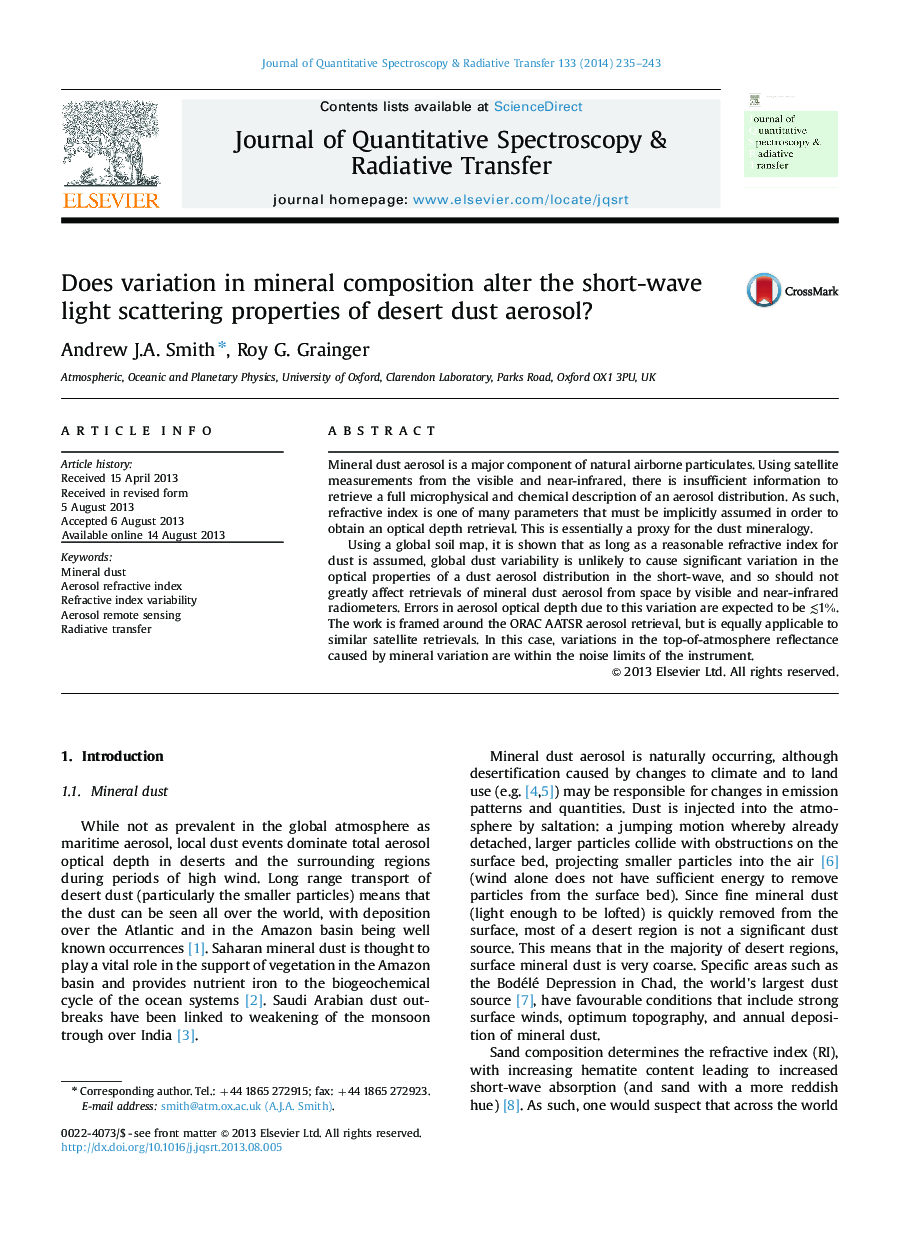| Article ID | Journal | Published Year | Pages | File Type |
|---|---|---|---|---|
| 5428551 | Journal of Quantitative Spectroscopy and Radiative Transfer | 2014 | 9 Pages |
â¢Global variation in dust aerosol refractive index is quantified using soil maps.â¢Resulting visible light scattering properties have limited variability.â¢Satellite aerosol retrievals do not need to account for varying dust refractive indices.
Mineral dust aerosol is a major component of natural airborne particulates. Using satellite measurements from the visible and near-infrared, there is insufficient information to retrieve a full microphysical and chemical description of an aerosol distribution. As such, refractive index is one of many parameters that must be implicitly assumed in order to obtain an optical depth retrieval. This is essentially a proxy for the dust mineralogy.Using a global soil map, it is shown that as long as a reasonable refractive index for dust is assumed, global dust variability is unlikely to cause significant variation in the optical properties of a dust aerosol distribution in the short-wave, and so should not greatly affect retrievals of mineral dust aerosol from space by visible and near-infrared radiometers. Errors in aerosol optical depth due to this variation are expected to be â²1%. The work is framed around the ORAC AATSR aerosol retrieval, but is equally applicable to similar satellite retrievals. In this case, variations in the top-of-atmosphere reflectance caused by mineral variation are within the noise limits of the instrument.
